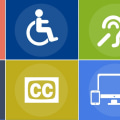User feedback is a crucial element in the design process. It provides valuable insights and perspectives from the end-users, helping designers create products that meet their needs and preferences. However, simply collecting feedback is not enough. It is essential to use this feedback effectively to improve designs and create user-centered products.
In this article, we will explore the importance of using user feedback in design and how it can be utilized to create better user experiences. We will also discuss the key principles of user-centered design and how feedback plays a critical role in the iterative design process. So, if you want to learn how to make your designs more user-friendly and effective, keep reading!First and foremost, it is crucial to understand what user-centered design is and why it is important. User-centered design is an approach that focuses on designing products or services around the needs, preferences, and behaviors of the users.
By incorporating user feedback into our designs, we can ensure that our products are intuitive, easy to use, and visually appealing. This leads to increased customer satisfaction and loyalty. To gather user feedback, there are various methods that designers can utilize. One of the most common methods is conducting user testing, where users are asked to complete tasks on a prototype or a live version of the product while providing feedback on their experience. Another method is through surveys or questionnaires, where users can give their opinions on specific aspects of the design.Responsive design is another crucial aspect to consider when designing for different devices.
With the increasing use of smartphones and tablets, it is important for designs to be adaptable to different screen sizes and resolutions. By taking into account user feedback and incorporating responsive design principles, we can ensure that our designs are optimized for all devices. In terms of trends in UI and UX design, it is important for designers to stay updated with the latest techniques and approaches. This can include using microinteractions to enhance user engagement, incorporating storytelling elements into the design, and utilizing AI and machine learning to personalize the user experience. By staying informed and implementing these trends, we can create designs that are not only visually appealing but also highly functional. To aid in the design process, there are various resources and tools available for designers to gather and analyze user feedback.
These can include prototyping tools, heat mapping software, and A/B testing platforms. By using these resources, designers can gather valuable insights from user feedback and make informed decisions to improve their designs. Overall, incorporating user feedback into the design process is crucial for creating a successful user-centered design. By understanding the importance of user-centered design, utilizing various methods to gather feedback, and staying updated with current trends and tools, designers can continuously improve their designs and meet the needs of their target audience.
Trends in UI/UX Design
As designers, it is essential to constantly seek ways to improve the usability and visual appeal of our designs. One of the most effective ways to stay updated with the latest techniques is by incorporating user feedback into the design process.By gathering user feedback, we can gain valuable insights into what works and what doesn't for our target audience. This allows us to make informed decisions and implement new trends in UI/UX design that will enhance the overall user experience. With the constantly evolving nature of technology, it is crucial for designers to stay on top of the latest trends and techniques in order to create designs that are not only visually appealing but also highly functional and user-friendly. By keeping up with the latest trends, designers can ensure that their designs are relevant and competitive in the ever-changing landscape of UI/UX design.
Resources and Tools
As designers, we understand the importance of incorporating user feedback into our design process.However, gathering and analyzing feedback can be a daunting task. Luckily, there are numerous resources and tools available to assist us in this process. One of the most popular tools for gathering user feedback is UserTesting. This platform allows designers to create tests and surveys to gain valuable insights from real users.
It also provides video recordings of user interactions for further analysis. Another helpful resource is UsabilityHub, which offers a variety of tools such as click tests, preference tests, and navigation tests. These tests can help designers understand how users interact with their designs and identify areas for improvement. In addition to these tools, there are also online communities and forums where designers can gather feedback from other professionals in the field.
Sites like Dribbble and Behance allow designers to share their work and receive constructive criticism from peers. To make the most out of user feedback, it is important to have a system in place for organizing and analyzing the data. Tools like Hotjar and Crazy Egg offer heatmaps and user behavior tracking to help designers understand how users are interacting with their designs. With these resources and tools at our disposal, designers can gather and analyze feedback more efficiently, leading to better design decisions and ultimately, a more user-centered design.
Gathering User Feedback
When it comes to improving designs, there is no better source of information than the end user.Gathering user feedback is crucial in creating a design that not only meets the requirements of the client, but also addresses the needs and expectations of the target audience. There are various methods for collecting user feedback, each with its own advantages and limitations. One of the most common methods is conducting surveys or questionnaires, which can be distributed online or in person. This allows for a large amount of data to be collected and analyzed, providing valuable insights into the user's thoughts and preferences.
Another effective method is conducting user interviews or focus groups. This allows for more in-depth discussions and observations of the user's behavior and thought process. However, this method can be time-consuming and may not be feasible for all projects. Other methods for collecting user feedback include usability testing, A/B testing, and heat mapping.
Usability testing involves observing users as they interact with a prototype or finished product, while A/B testing compares two versions of a design to see which performs better. Heat mapping tracks where users click and scroll on a website, providing valuable data on user behavior. It is important for designers to carefully consider which method(s) will work best for their project and target audience. By gathering user feedback, designers can make informed decisions and continuously improve their designs based on real user experiences.
Responsive Design
When designing for the modern web, it is crucial to ensure that our designs are responsive and can adapt to various devices.With the increasing use of mobile devices, it is essential to create a design that is not only visually appealing but also functional on smaller screens. Responsive design refers to the ability of a website or application to automatically adjust its layout and content based on the device it is being viewed on. This means that the design will look and function differently on a desktop computer compared to a smartphone or tablet. By incorporating responsive design principles, we can provide a seamless user experience across all devices, improving usability and accessibility for our target audience. One of the key aspects of responsive design is using flexible grids and layouts. This allows elements on the page to resize and reposition themselves based on the screen size.
For example, instead of having a fixed-width layout for a desktop screen, we can use percentage-based units for elements such as images and text, making them adjust accordingly for smaller screens. In addition to flexible grids, responsive design also involves using media queries to apply different styles based on the screen size. This allows us to customize the design for different devices, ensuring that it remains visually appealing and functional across all screen sizes. Another important aspect of responsive design is optimizing images and media for different devices. Large images or videos may look great on a desktop screen, but they can cause loading issues and affect the overall performance on a mobile device. By using techniques such as lazy loading or compressing images, we can improve the speed and performance of our designs on all devices. In conclusion, responsive design plays a crucial role in creating user-centered designs that meet the needs and expectations of our target audience.
By adapting our designs for different devices, we can provide a seamless and enjoyable user experience, ultimately leading to better engagement and satisfaction with our products. Incorporating user feedback into the design process is essential for creating a successful user-centered design. By understanding the needs and preferences of our target audience, adapting to different devices, staying updated with trends, and utilizing resources and tools, we can continuously improve our designs and provide a positive user experience. Remember to always listen to your users and use their feedback to guide your design decisions.


